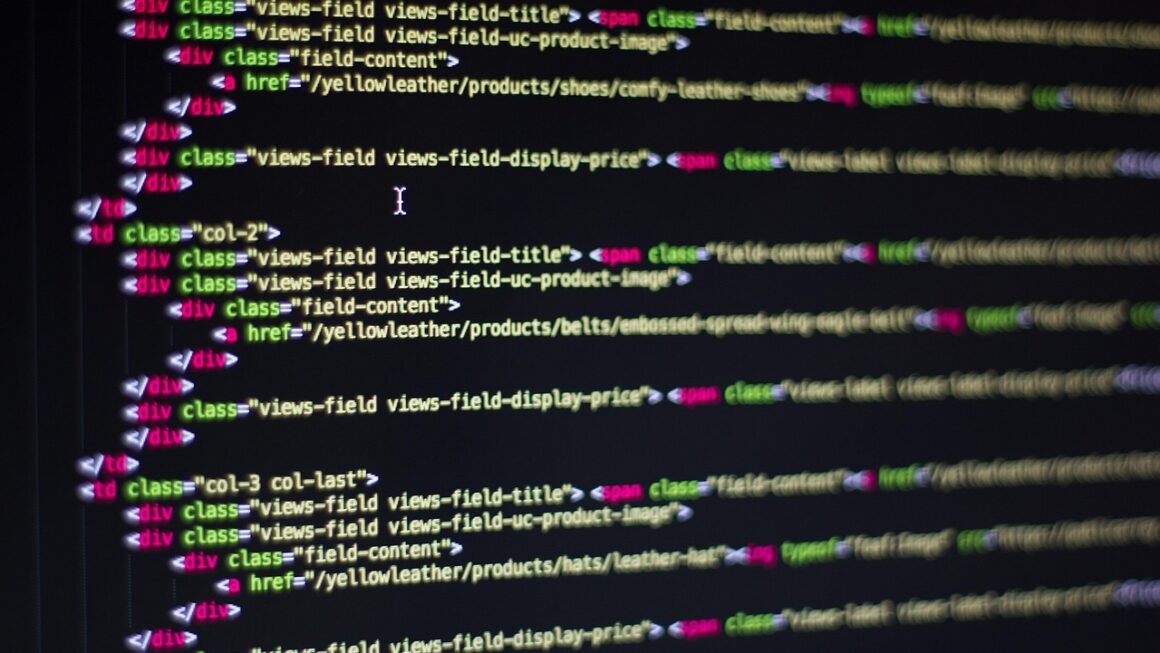Python, renowned for its readability and extensive libraries, has become the go-to language for everything from data science to web development. But even the most seasoned Pythonistas sometimes face coding roadblocks. Enter AI – a game-changer that’s revolutionizing how we write, debug, and optimize Python code. This blog post will delve into the world of AI-powered tools specifically designed to amplify your Python coding prowess, streamlining your workflow and unlocking new levels of efficiency.
AI-Powered Code Completion and Generation
AI-driven code completion tools are not just about auto-filling a few characters; they learn from vast datasets of code, predict your intent, and suggest entire code blocks, significantly accelerating development.
Understanding Code Completion Engines
- Traditional auto-completion: Relies on static analysis and keyword matching, offering limited context-aware suggestions.
- AI-powered completion: Leverages machine learning models trained on massive codebases to predict the most relevant suggestions based on context, coding style, and project-specific patterns. These models often use techniques like transformers and recurrent neural networks (RNNs).
Popular AI Code Completion Tools for Python
- GitHub Copilot: Paired programmer that suggests code snippets and entire functions in real-time, directly within your IDE. It’s powered by the OpenAI Codex model.
Example: If you start writing a function to calculate the Fibonacci sequence, Copilot might suggest the entire function body after you type the function definition.
- Tabnine: Offers both local and cloud-based code completion, learning from your code patterns and providing personalized suggestions. Supports various IDEs and editors.
Example: If you frequently use the `pandas` library to read CSV files, Tabnine will quickly suggest the `pd.read_csv()` function when you type `pd.`.
- Kite: Provides intelligent code completions, documentation, and examples directly within your coding environment.
Example: Hovering over a function name in your code will display relevant documentation and usage examples from the Python standard library or imported packages.
Benefits of AI Code Completion
- Increased Productivity: Reduce boilerplate code and repetitive tasks, allowing you to focus on higher-level problem-solving. According to some studies, AI code completion tools can increase developer productivity by up to 40%.
- Improved Code Quality: Suggest best practices and prevent common errors by leveraging the knowledge embedded in their training data.
- Faster Learning: Discover new libraries, functions, and coding patterns by exploring the suggestions provided by the AI assistant.
- Reduced Context Switching: Access documentation and examples directly within your IDE, minimizing the need to search online.
AI-Driven Code Debugging and Error Detection
Debugging can be one of the most time-consuming aspects of software development. AI is starting to offer solutions that can automatically detect errors, suggest fixes, and even explain the root cause of bugs.
Automated Error Detection
- Static Analysis with AI: Traditional static analysis tools are enhanced with AI to identify more complex errors and vulnerabilities beyond simple syntax errors. They can learn from patterns of errors found in other codebases.
- Predictive Error Detection: Some tools use machine learning to predict potential errors based on code patterns and historical data.
AI-Powered Debugging Tools
- DeepCode (now part of Snyk): Analyzes code to identify security vulnerabilities and performance bottlenecks, offering suggestions for improvement. It uses a knowledge base of code patterns and bug reports.
- Codiga: Provides automated code reviews and detects code smells and anti-patterns, helping to improve code maintainability and prevent future bugs.
- Error Explanation and Suggestion: Some AI tools can analyze error messages and suggest possible causes and fixes, reducing the time spent debugging. These tools are often integrated into IDEs or used as command-line utilities.
Practical Examples of AI Debugging
Imagine your Python code throws a `TypeError`. Instead of manually tracing the error back through your code, an AI-powered debugger might:
This not only fixes the immediate error but also helps you understand the underlying problem, preventing similar errors in the future.
Code Optimization with AI
Beyond writing and debugging code, AI can also help optimize existing Python code for performance, readability, and maintainability.
Optimizing for Performance
- Profiling and Bottleneck Detection: AI can analyze your code’s performance and identify areas that are causing slowdowns (bottlenecks).
- Code Refactoring Suggestions: AI can suggest code refactoring to improve performance, such as replacing inefficient loops with vectorized operations using NumPy.
- Automatic Parallelization: Some tools can automatically parallelize parts of your code to take advantage of multi-core processors.
Improving Code Readability and Maintainability
- Code Style Enforcement: AI-powered linters and formatters (like Black, Pylint, and Flake8) can automatically enforce coding style guidelines, ensuring consistent formatting and readability.
- Code Simplification Suggestions: AI can suggest ways to simplify complex code blocks, making them easier to understand and maintain.
- Automated Documentation Generation: Tools can generate documentation from your code using docstrings and comments, reducing the manual effort required to keep documentation up-to-date.
Example: AI-Driven Code Refactoring
Let’s say you have a slow-running Python loop:
“`python
result = []
for i in range(1000000):
result.append(i 2)
“`
An AI-powered optimization tool might suggest replacing this loop with a list comprehension, which is generally faster in Python:
“`python
result = [i 2 for i in range(1000000)]
“`
AI-Assisted Learning and Documentation
Learning Python and keeping up with its evolving ecosystem can be challenging. AI is providing new ways to learn, understand documentation, and find relevant code examples.
Intelligent Documentation Search
- Semantic Search: Instead of just searching for keywords, AI-powered search engines understand the meaning* of your query and provide more relevant documentation results.
- Contextual Examples: AI can find and display code examples that are relevant to the specific task you are trying to accomplish.
AI-Powered Tutoring and Code Explanation
- Interactive Tutorials: AI can provide personalized learning experiences, adapting to your skill level and learning style.
- Code Explanation Tools: Some AI tools can explain the functionality of code snippets in natural language, helping you understand unfamiliar code.
- Automated Code Translation: Tools are emerging that can translate code between different languages (e.g., Python to JavaScript), making it easier to work with different platforms.
Example: AI-Powered Documentation
Imagine you’re trying to understand how to use the `requests` library to make an API call. An AI-powered documentation search might:
This is much more helpful than simply returning a list of links to the `requests` documentation.
Conclusion
AI is rapidly transforming the landscape of Python coding. From intelligent code completion and debugging to performance optimization and enhanced learning resources, AI-powered tools are empowering developers to write better code, faster. While AI won’t replace human programmers anytime soon, it’s clear that embracing these tools can significantly boost your productivity, improve your code quality, and unlock new possibilities in your Python projects. The key takeaway is to explore these tools, experiment with their features, and integrate them into your workflow to experience the benefits firsthand.




